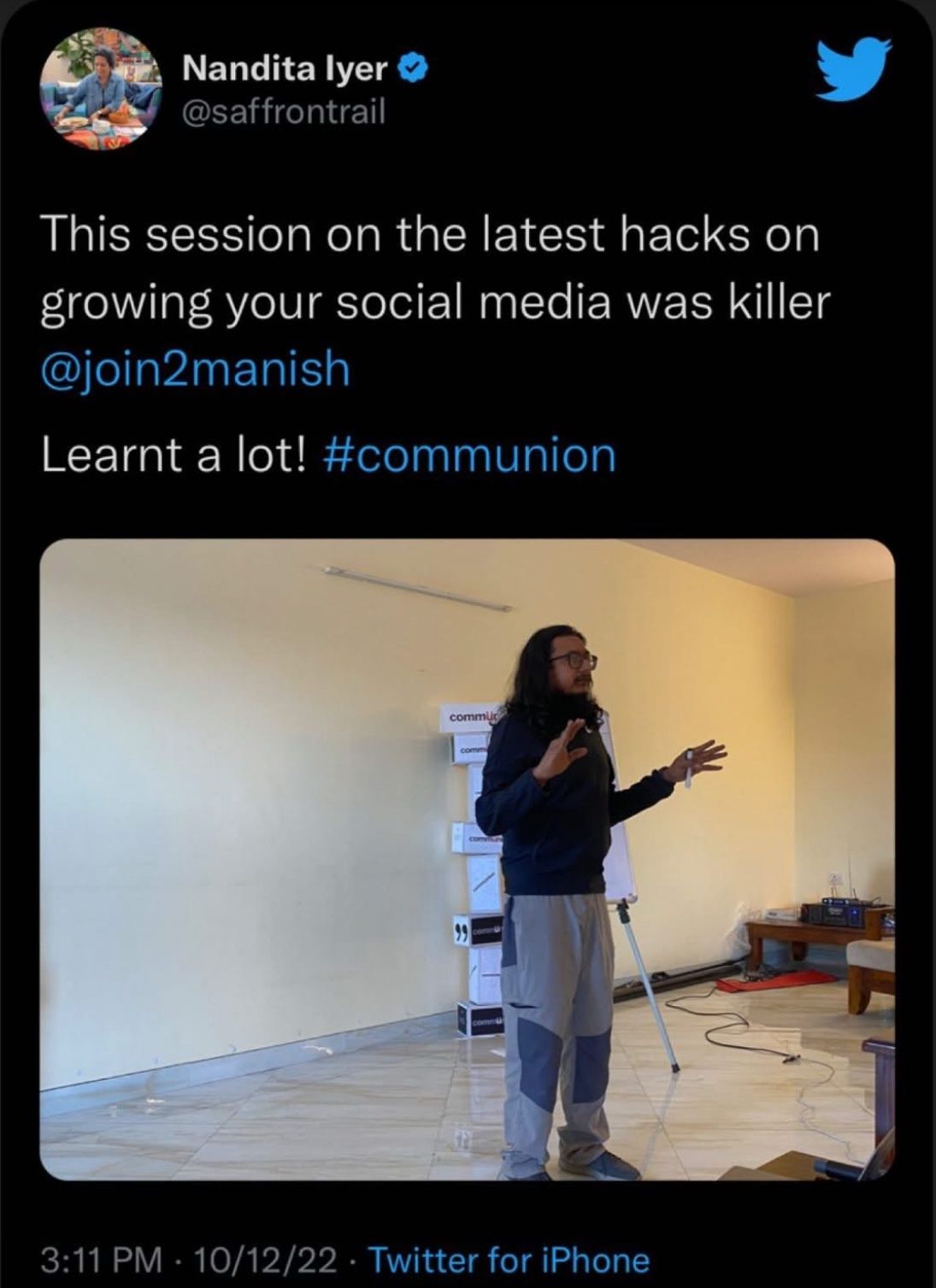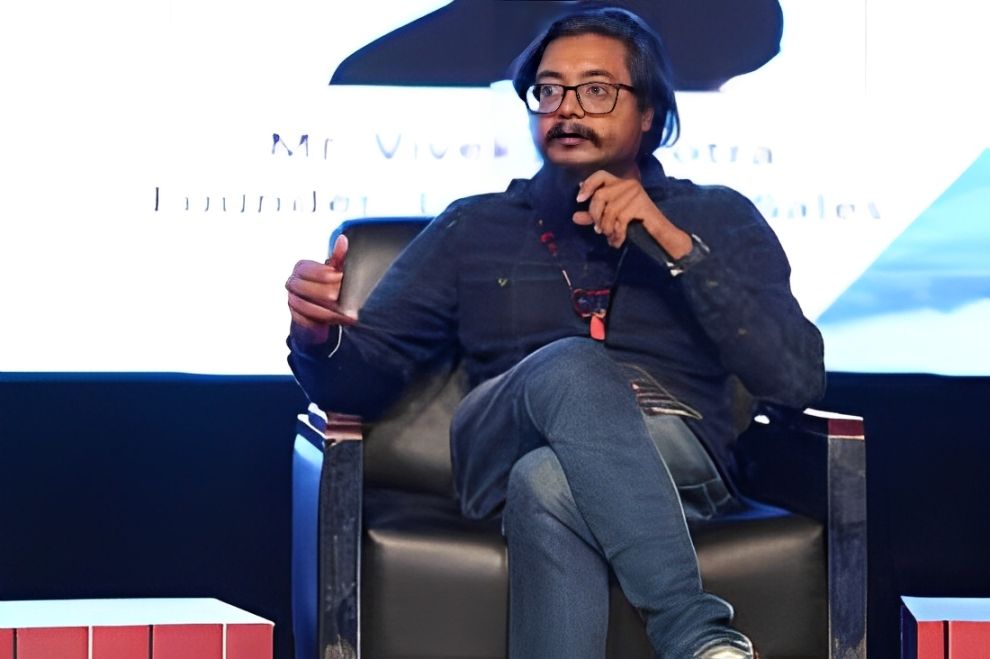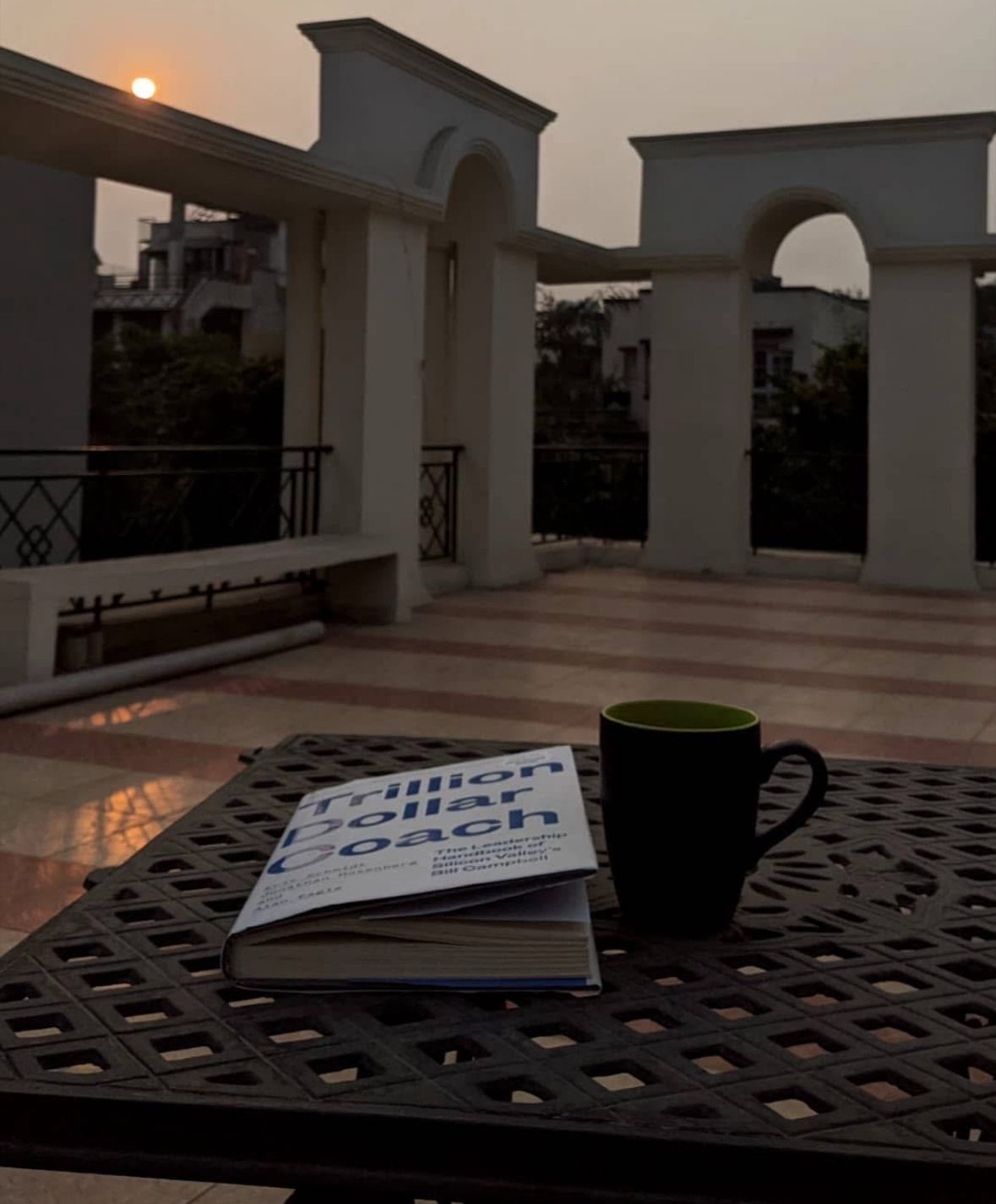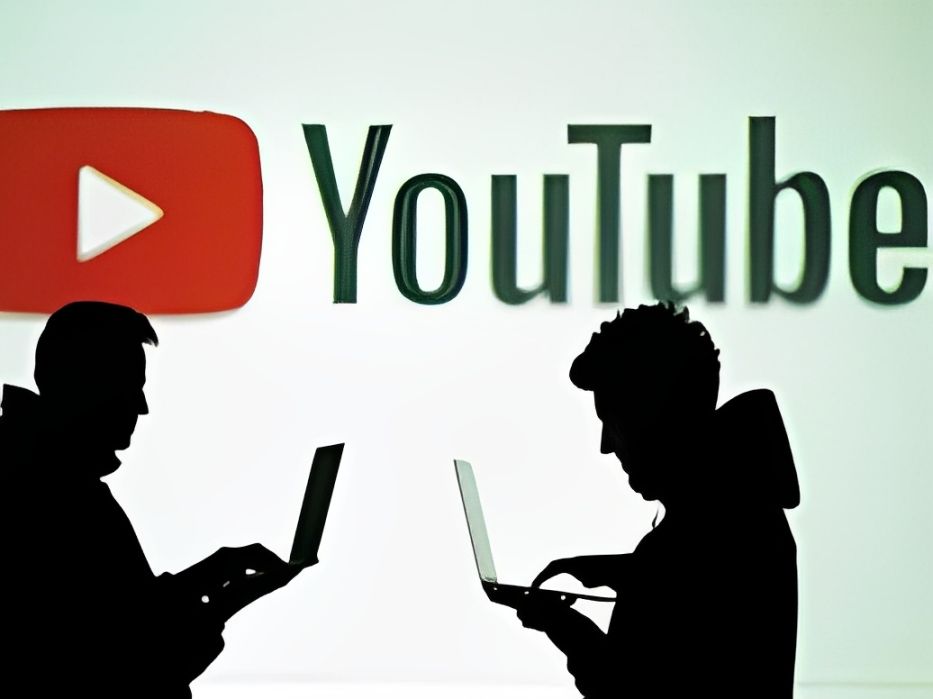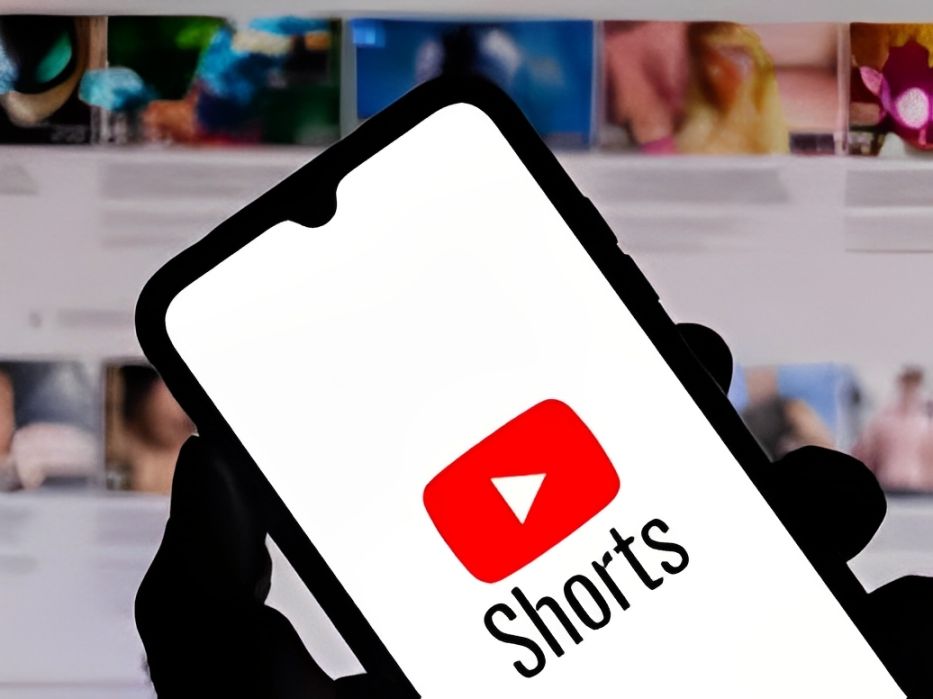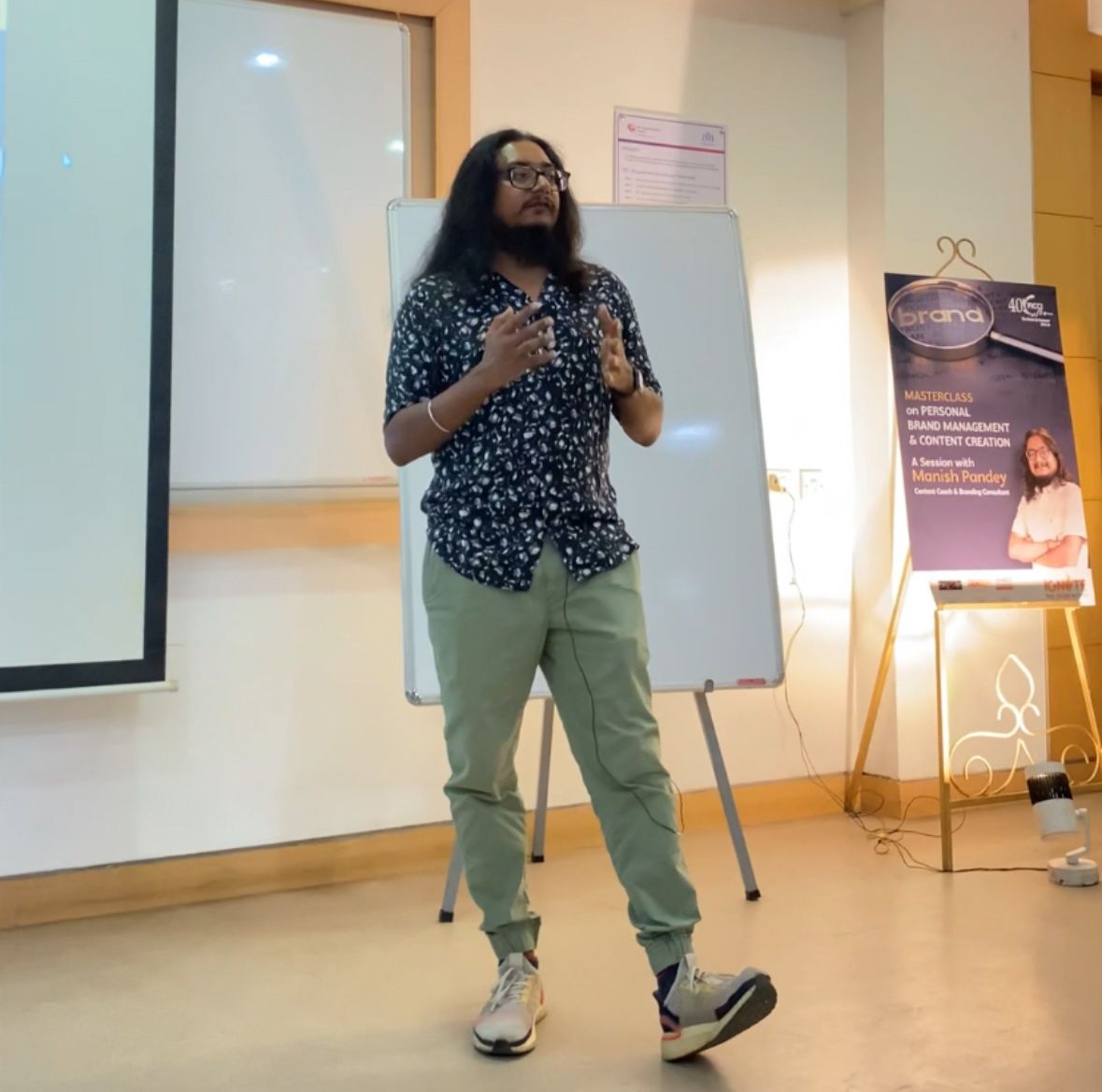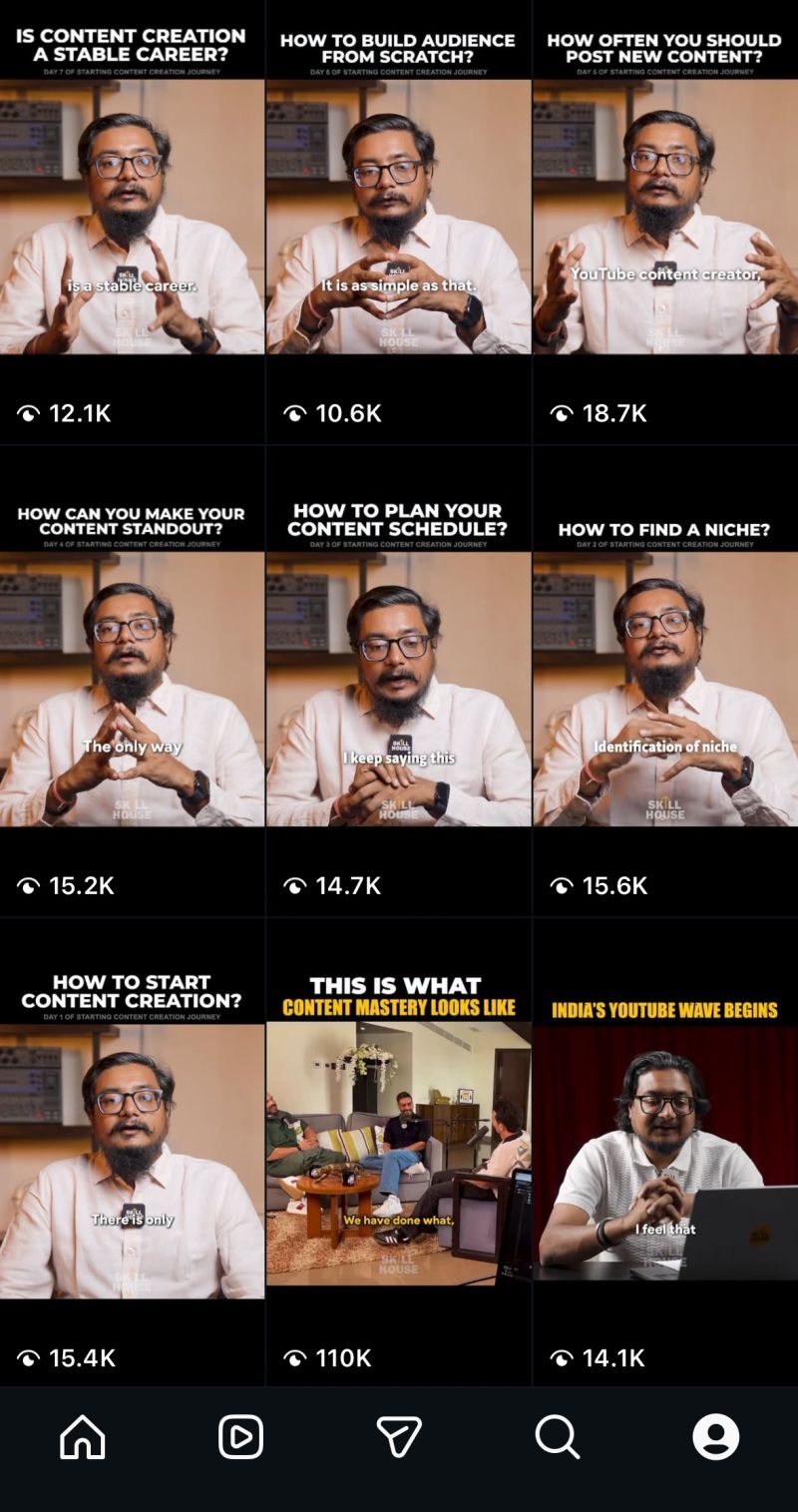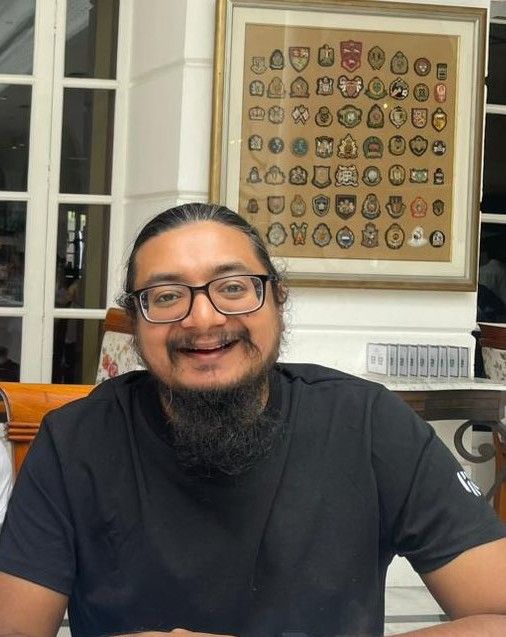Meta just dropped a MAJOR update that’s about to change performance marketing on Facebook & Instagram From 16 December 2025, Meta will start using your conversations with Meta AI (text + voice) to decide: • What ads you see• What content shows up in your feedIn short: your chats become targeting signals What’s changing? • Every time someone asks Meta AI a question (“best running shoes under ₹5K”, “how to start a podcast”, “CRM tools for small business”), that intent can now be used to power ad delivery • This goes beyond interests & behaviour. It’s real-time, explicit intent – what people say they want right now • No separate “opt-in” for ads. If you use Meta AI, your chats can fuel targeting.This is the closest Meta has come to search-like intent inside a social product Why this is HUGE for marketers Here’s what it means if you run ads: • Higher-intent audiences: You’re no longer only chasing people who clicked on a Reel or visited a website. You’re tapping into people actively asking for solutions • Smarter delivery for performance ads: Meta’s AI can better predict who is likely to buy / sign up / install – which should improve ROAS, CVR, and lead quality over time • Faster learning loops: As AI conversations scale, signals grow richer. Performance campaigns (Advantage+, broad targeting, value optimisation) will likely outperform over-segmented manual setups • Creative relevance becomes make-or-break If the system is matching ads to intent, lazy, generic creatives will die fast. Context-rich hooks that mirror user questions will win How brands & ad teams should respond (practically) If you’re a marketer, media buyer, founder or creator-led brand, here’s what to start doing: 1) Rewrite your hooks for intent • Old: “Premium wireless earbuds for everyone”• New: “Looking for wireless earbuds under ₹5K that don’t drop from your ears?” 2) Lean into broad + Advantage setupsLet Meta’s AI do the heavy lifting. Give it: • Clean conversion data (CAPI, proper events)• Enough budget & time to learn• Multiple creatives to test, not 1–2 static ads 3) Build modular creative libraries: • Multiple angles: problem, comparison, testimonial, offer• Multiple formats: short UGC, explainers, carousels, product demosYou’re optimising a creative portfolio, not a single “hero” ad 4) Double down on first-party data: • Pass back accurate purchase / lead quality data• Use this with Meta’s AI to train it on your best customers, not just generic buyers 5) Watch performance, not just CPMCPM might go up in the short term as the system tests. The real question: • Is ROAS improving?• Are CPAs stable or dropping?• Is lead / customer quality better? The mindset shift For years, performance marketers learned to: • Hack interests• Stack lookalikes• Over-engineer ad sets
Personal Branding First Principles
Everyone’s talking about personal branding and how one should go about it Lets lock some basics and first principles It’s not about bragging or self-promotion It’s about owning your reputation in a world where your digital footprint defines you For founders, leaders, & content creators, a strong personal brand isn’t a vanity project, it’s your most critical business asset Here are some non-negotiable principles for building a brand that drives real impact & opportunity This is your note-taking guide 1) Your Mission is Your Magnet: – Before you chase a single follower, define your mission – Who are you, what do you do, who do you serve, and what transformation do you create? – A clear mission statement is the foundation for all your content – Don’t build on sand 2) Niche Down to Scale Up: – You cannot be for everyone – Your unique value is found at the intersection of your expertise, your passion, & a specific audience’s problem – Be a specialist, the riches are in the niches 3) Master One Platform, Don’t Boil the Ocean: – Don’t try to be on LinkedIn, Instagram, YouTube, & Threads all at once – Find where your audience lives and dominate that one platform – Go deep, not wide – Quality & consistency on one channel beat mediocrity on five 4) Create a Content System, Not Just Content: – Stop posting randomly – Build a 90-day content plan around 3-5 core pillars that provide value (educate), build credibility (proof), & spark conversation (engage) – Systematize your value delivery 5) Authenticity is Your Ultimate Advantage: – In an era of AI & deepfakes, your humanity is your superpower – Share your wins, your lessons, your learnings, your losses & your perspective – Polished perfection is dead; trust is built through authentic, mission-driven storytelling 6) Engage More Than You Broadcast: – Talk, Write, Reply, Don’t “post & ghost” – The real magic happens in the comments on your posts & others’ – Block out time daily to have real conversations – Your network & authority are built through genuine interaction, not just broadcasting 7) Monetize the Mission, Not Just the Media: – A strong brand unlocks multiple income streams – Don’t just think ads or sponsorships – Think courses, consulting, paid communities, workshops, and digital products – If you solve a painful problem, your audience will gladly pay for the solution.Your personal brand is being built with or without your input – The only question is whether you want to be the one driving the narrative What’s the #1 challenge you’re facing with your personal brand in 2025? Let’s discuss in the comments, I will reply to all that I have answers to Photo from one of the best group I have been a part of – Communion, this one was the first edition in 2022, Rishikesh, India Photo by Sandeep Mall – follow him for health and life lessons
Trillion Dollar Coach
When it comes to learning about leadership, I have a ritual of reading a specific book every December, Ashish Tulsian introduced me to this book in 2019, & since then it’s been a year-end ritual Most people think “personal brand” is shouting loudly on the internet, its opposite of that Brutal truths about leadership & personal branding from Trillion Dollar Coach, simplified for founders, content creators & leaders: 1) Your title makes you a manager: How your people talk about you when you’re not in the room makes you a leader 2) Authenticity is a strategy: Bring your full self to work:values, quirks, flaws, people follow the real you 3) Humility > authority: Respect isn’t a line in your bio; it’s how you show up when you could easily pull rank but you don’t 4) Care is real USP: Ask about families, health, struggles, people never forget leaders who genuinely care 5) Truth beats comfort: The leaders people trust most are the ones who tell them what they need to hear, not what they want to hear 6) Listening is a power move: Undivided attention is rare, makes people feel heard & they will remember you for life 7) Love + hard feedback: Great leaders hug with one arm & hold a mirror with the other. High challenge, high care 8) Protect the “trust envelope”: Do what you say. Keep confidences, one leak can destroy a decade of brand-building 9) Be a confidence amplifier: See potential people can’t see in themselves, lend them your belief until they build their own 10) Service over status: If you need the spotlight, you’ll lose the room, if you grow others, your reputation compounds 11) Treat everyone the same: Board member or barista, your brand is how you treat the person who can’t “do” anything for you 12) Show your scars: Admitting “I don’t know” or “I was wrong” makes people trust you more, not less 13) Feedback in real-time: Praise in public, correction in private, as close to the moment as possible, clarity is kindness 14) Kill ego politics early: Don’t tolerate drama, silos or “I, me, mine” behaviour, protect the mission ruthlessly 15) Build psychological safety: When people feel safe to speak up, they give you their best ideas not their safest ones 16) Use 1:1s for humans, not just OKRs: Start with life, then move to work, relationships first, dashboards later 17) Be aggressively generous: Time, intros, credit, opportunities, the market remembers givers more than takers 18) Crisis reveals true brand: Everyone watches how you behave when things break, that is your leadership identity 19) Only invest in the coachable: Energy is limited, pour it into the people who are hungry to learn, not those defending their ego 20) Live your 1st principles: Values don’t matter when it’s easy, they matter when it’s expensive Bill never called himself the “Trillion Dollar Coach” The world did, the best leaders who owned Trillion Dollar Companies did Your personal brand isn’t what you say about yourself, it’s about what others think of you
YouTube’s New Collab Feature
What if YouTube made it 10 times easier to grow without posting more videos? For years, creators have been trying to reach new viewers:– Guest appearances on other channels– Shoutouts in videos– Linking channels in descriptions It worked, but it was messy and slow. Now, YouTube is testing a built-in Collab Video feature that makes all of this instant. Here’s what it lets you do:– Upload your video and invite another creator to co-own it– Once they accept, the same video shows up on both your channels– Views, likes, and comments are counted together instead of being split– Viewers can tap to subscribe to every collaborator right from the video– On mobile, YouTube neatly lists all tagged collaborators, with a “and more” option if there are many Why this is huge:– Your video gets shown to your audience AND their audience at the same time– This means instant growth without posting more content– Perfect for podcasts, interviews, brand campaigns, and co-created videos– Brands can work with multiple creators in one smooth project without messy uploads– Audiences are more likely to subscribe when they see creators together in one official post Example:If you have 5k subscribers and collab with someone who has 20k, your video now gets exposure to 25k people on day one. That’s the power of this feature. Right now, YouTube is only testing this with a small group of trusted creators. But when it rolls out to everyone, the first ones to use it will get the biggest jump in audience and reach. So, the question is not “should you use it,” the real question is who will you collab with first.
25 Things You Should Never Do as a YouTube Content Creator
25 Things You Should Never Do as a YouTube Content Creator As a YouTuber, it’s easy to focus on growth, engagement, and virality But equally important is knowing what not to do on YouTube The YouTube Community Guidelines are not just fine print, they are foundational rules that protect creators, audiences, & the entire ecosystem Violating them can lead to demonetization, content strikes, or even a permanent ban Here’s a clear checklist every creator should be aware of: 1) Avoid spam or deceptive tactics. This includes fake giveaways, misleading thumbnails or titles, and repetitive comments 2) Do not impersonate individuals, brands, or public figures. Even parody has boundaries 3) Never upload sexually explicit content or fetish-focused material 4) Do not sexualize or exploit minors. YouTube removes such content immediately. 5) Never promote self-harm, suicide, or eating disorders. YouTube actively removes this type of content 6) Avoid graphic violence or gore unless it is used in educational or documentary context 7) Do not perform or encourage dangerous stunts or pranks that could cause harm 8) Never threaten others or reveal their private data. This includes cyberbullying and doxxing 9) Hate speech is strictly forbidden. Do not target anyone based on race, gender, religion, or any protected identity 10) Avoid chronic harassment or targeting individuals with slurs or ongoing negativity 11) Do not share how-to content that teaches dangerous or illegal activities 12) Never show minors in inappropriate or risky situations, like handling fireworks or drinking alcohol 13) Refrain from promoting or linking to illegal goods such as firearms, drugs, or fake documents 14) Medical misinformation can cause real-world harm. Avoid spreading unverified health claims 15) Do not share content that misleads about elections or discourages people from voting 16) Avoid manipulating engagement metrics. This includes buying views, using bots, or misleading thumbnails 17) Repetitive, low-quality, or copied content may lead to demonetization or channel removal 18) Respect copyright. Use licensed audio, video, or media assets 19) Protect privacy. Do not expose others’ personal details like phone numbers or addresses 20) Never promote or associate with violent extremist groups or criminal organizations 21) Harmful or deceptive links, such as phishing sites or crypto scams, are not allowed 22) Animal cruelty is not entertainment. Do not upload such content, even staged ‘rescues’ 23) If content is made for children, label it accurately and follow all kid-focused policies 24) Do not mislead about age-appropriate content or encourage unsupervised usage by minors 25) Never try to bypass enforcement by creating new channels after strikes or bans If you want to connect with me to discuss starting/scaling content, strategy, growth, feel free to block my time using topmate.io/join2manish, book your slot
YouTube Shorts Viral Checklist
YouTube is not a mystery. It is a system that rewards specific viewer signals. When you know what those signals are, you stop guessing and start creating content that travels further. YouTube recently shared its Shorts Viral Checklist. It is a practical set of 5 actions that align with how the platform’s algorithm measures watch time, engagement and click-through rate. Here is the breakdown:• Create a scroll stopping title. Keep it short, clear and curiosity-driven. • Always add subtitles. They improve retention and make your content more accessible. • Nail your hook in the first 3 seconds. This is when the viewer decides to keep watching. • Adjust your publishing settings. Turn off the paid promotion tag if not running ads and set comments to basic. • Do not miss the final tip in YouTube’s pinned comment. It is often the most impactful for new creators. Apply these steps consistently and you will start building videos that not only get views but hold attention. That is when growth becomes predictable.
YT Shorts vs YT Long-Form
Shorts vs Long-Form: The Truth Every Creator Should Know Every content creator today is facing one question should you go all-in on short-form Reels/Shorts for viral reach, or focus on long-form videos & podcasts for long-term growth? Here’s the reality, based on deeper research and real numbers: 1) Short-form (Reels/Shorts) feels exciting 1 viral post, overnight reach, phone flooded with notifications. But the same viral shorts (1M views) gets you only ₹5-24 thousand.(About $10–60 in the US scenario) The same 1M views on a long-form YouTube video can get you ₹1–2 lakh (or $1200–6000+). That’s the gap. Why? Platforms reward watch time, not just views. Platforms like YouTube & Instagram want you creating short videos. Why? – 60–80% finish a 30-sec video, only 20–30% complete a 30-min one – 60 short videos mean 60 ad slots, 1 long video = 1–2 ad slots – Each swipe = 15x more data points for the platform to learn from 2) For content creators: – Short-form brings FOLLOWERS– Long-form brings TRUST—and sales– Most brand deals, product sales, and e-courses come from long-form videos, podcasts, and deep interviews – No one pays ₹50,000 for a course after watching a reel they do after binging 3 hours of your content. Even Gary Vee & BeerBiceps use both:• Use Shorts to get attention• Use long-form to build strong revenue streams Gary Vaynerchuk’s Approach: – Creates pillar long-form content, then cuts it into dozens of short clips distributed everywhere.– His philosophy: “Be where attention is, but build where trust pays.” BeerBiceps (Ranveer Allahbadia) Strategy: – 2-3 hour podcast episodes with A-list guests form the foundation.– Instagram Reels are just appetizers that drive people to the main course. But here’s what most ignore: Short-form content is TRULY rewiring our brains Research shows that heavy social media use correlates with reduced attention spans and impaired cognitive control. 5 years ago, you could watch a 3-hour movie without checking your phone. Today, 10-minute videos feel too long. – Attention spans are collapsing– But deep focus is what separates top professionals from the crowd– In 2025, your ability to focus for 30+ min is your secret weapon 3) So, how to win? Follow the 70-20-10 Rule for content:Creators: – 70% focus = long-form (foundation, money, trust)– 20% = short-form (repurpose main video, new experiments)– 10% = collabs, newsletters, livesConsumers:– 70% should be podcasts/videos/masterclasses– 20% strategic Shorts/Reels, only to discover deeper content– 10% newsletters/reading Key: – Don’t obsess over views– Focus on watchtime, retention, & monetization– Stop chasing scattered virality– Start building content assets that compound– Both formats are TOOLS – not destinations– Short-form gets you noticed– Long-form gets you PAID India: 600M+ daily viewers: 385M IG users70B Shorts views/day: 490M YT users But the creators who make a living?They play the long game.
YouTube’s 2025 Monetization Shake-Up
YouTube dropped its biggest creator economy updates in 2025 – and it’s reshaping everything we know about content monetization After deep-diving into YouTube’s revolutionary changes, here’s what every content creator, brand manager, and marketer needs to know: 1) MONETIZATION CRACKDOWN IS REAL: YouTube renamed “repetitious content” to “inauthentic content” – targeting AI-generated, mass-produced videos. Template reactions and low-effort compilations? Say goodbye to monetization. This isn’t just policy tweaking; it’s YouTube betting big on authentic storytelling. 2) THE HYPE FEATURE = DEMOCRATIZED DISCOVERY: This changes everything for smaller creators (under 500K subs). Viewers can “hype” 3 videos weekly, pushing content up ranked leaderboards. In beta testing alone: 5M+ hypes across 50K+ channels. For brands scouting emerging talent? This is your new goldmine. 3) COLLAB FEATURE FOR LONG-FORM VIDEOS: YouTube’s Instagram-inspired collaboration tool is now live. Creators can tag up to 4 collaborators per video, displaying all avatars beside the title. The game-changer? Videos get recommended to ALL collaborators’ audiences simultaneously. MrBeast was first to showcase this with Mark Rober and others. Revenue currently goes to uploader, but exposure is 4) MULTI-LANGUAGE AUDIO = GLOBAL REACH UNLOCKED: Every creator now gets AI-powered dubbing in multiple languages. Jamie Oliver tripled his viewership. Mark Rober averages 30+ languages per video. For Indian creators speaking Hindi, Tamil, Telugu? Your content can now reach global audiences effortlessly 🇮🇳 INDIA STATUS CHECK: – Hype Feature: Live since July 2025– Multi-language Dubbing: Rolled out September 2025– Collab Feature: Currently testing with select creators– Dream Screen AI (Veo 2): Coming late 2025/early 2026 THE BRAND OPPORTUNITY: 1) 491M YouTube users in India (largest globally) 2) 110K-170K Indian creators actively monetizing 3) Collaborations can 4x audience reach instantly 4) Only 8-10% of 2.5M active creators earn meaningful income STRATEGIC IMPLICATIONS: → Authentic collaboration > sponsored content → Cross-audience exposure through collab tagging → Smaller creators can access larger audiences → Revenue sharing discussions needed off-platform The creator economy just shifted from individual silos to collaborative ecosystems. Those who adapt early win big.
Do Instagram Reel Covers Really Matter?
Should Content Creators Care About Instagram Reel Covers? Does it have Real Impact? If you’re investing time in making custom Reel covers, read this before your next upload What Instagram’s Head Adam Mosseri has clarified: 1) Your Reel cover/thumbnail does not impact reach or algorithmic distribution 2) Custom thumbnails (from Canva/Adobe Express) have zero negative effect on how your Reel performs in Recommendations or Explore: algorithm simply doesn’t care So, where do Reel covers actually matter? 1) Profile Grid Aesthetics: – Covers show up in your feed and profile grid, they make first impressions – A branded grid signals professionalism and intentionality – Messy grids > confused visitors 2) Profile-Level Click-Through: – A cover with clear topic text helps profile visitors instantly pick content that interests them – This boosts your views from returning and new profile visitors 3) Content Discoverability: – Creators who teach, coach, or share resources benefit most clear covers make your profile a searchable resource library for your audience 4) Brand Consistency: – Consistent covers with your brand colors/fonts build credibility and trust – Even if you skip covers sometimes, intentional design has compounding effects 5) No Impact on Algorithm, But Yes on Human Behavior: – Most Reel views come from IG’s Recommendations, where cover isn’t shown – But people do judge your expertise based on profile appearance Pro Tips for Reel Covers (if you use them): – Keep the core message in the center/top third of the cover– Limit text to 3-4 actionable words– Use template batches—update covers even after posting – Recommended dimensions: 1080 x 1920 px (safe zone in the center) Who Should Focus on Reel Covers? – Business, educational, and expert-led creators: Covers = valuable asset – Entertainment-only creators: Optional for algorithm, useful for branding Bottom Line: Covers don’t change reach, but they make your content discoverable and your brand trustworthy, especially for “profile browsers.” What’s working for you? Do custom covers drive more clicks from your profile? Drop your results & questions below
Stop Creating More, Reuse Your Best Reels.
The most overlooked Instagram growth tactic right now does not involve paid ads, trending audio, or even fresh content. It is about being smart with what has already worked for you. Recently, a viral clip featuring a digital creator known as “Saurik Girl” shared a valuable insight on using Instagram Trials, and it is one of the most practical organic strategies I’ve seen in a while. Here’s the idea:Instead of only uploading new Reels, go back to your top-performing videos from the past. The ones that brought you the most views, reach, engagement, or followers. Re-upload those videos using Instagram’s Trials feature. Instagram Trials is still being rolled out to more users, but it acts like a testbed for creators to try out their content with a wider audience. It is designed to help Instagram surface content to new viewers based on performance and interest matching. So what happens when you re-upload past hits to Trials?– You bypass the need for ads or boosting– Instagram’s algorithm does the work of distributing it to fresh audiences– You get sustained reach from content that already proved itself– You gain new followers without producing new content every time This is smart content leverage. It is about working with data you already have your own best-performing content, and letting the algorithm serve it to people who haven’t seen it yet. A few key tips if you want to try this:– Choose Reels that performed well organically– Add small updates to captions or hooks to keep them fresh– Monitor what works and refine your content strategy accordingly– Don’t over-repost too often. Keep a balance to avoid fatigue Many creators and businesses believe growth on Instagram today requires either heavy creativity or heavy spend. But thoughtful strategy often wins. By using what worked in the past, you increase your odds of future reach, without burnout or budget. Sometimes the best social media strategy is not always about “what’s next,” but “what still works.” If you’re building a personal brand, coaching business, or creative studio, remember: smart reuse is not lazy. It’s strategic. Let the algorithm work for you. Let me know if you’ve tried this tactic or plan to. If you want to connect with me to discuss starting/scaling content, strategy, growth, feel free to block my time using topmate.io/join2manish, book your slot
